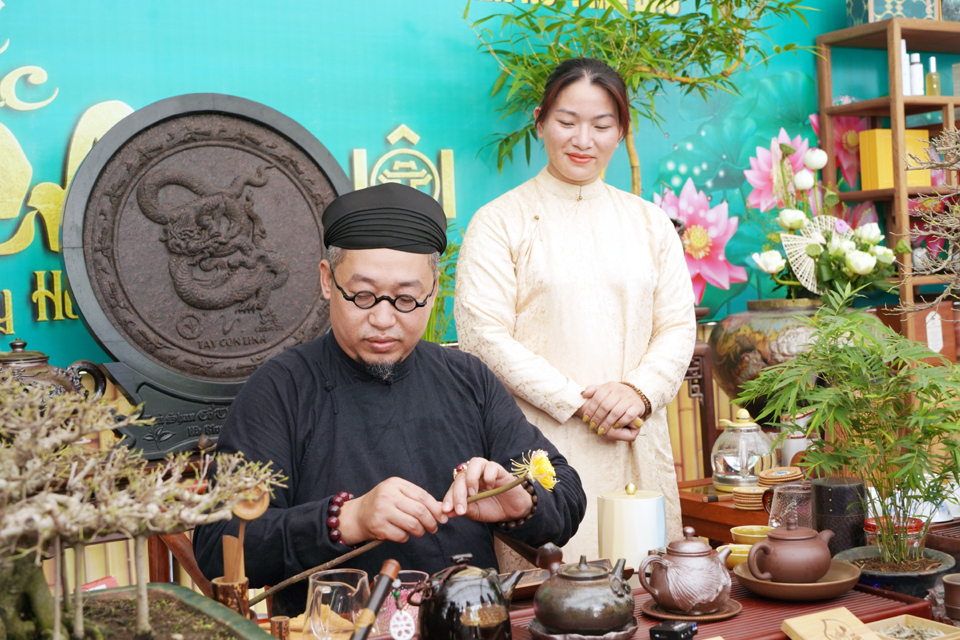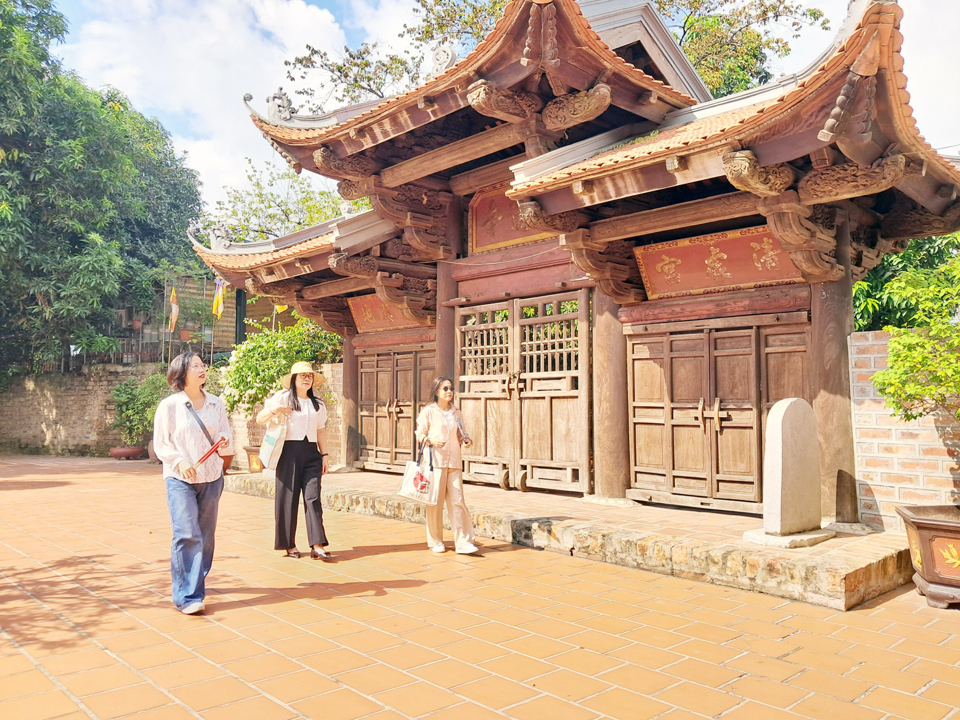According to Truong Minh Tien, Chairman of the Hanoi UNESCO Club Association, expanding the lotus cultivation area and fostering better collaboration between Tay Ho District authorities, local communities, and tour operators are crucial steps in developing and enhancing local tourism offerings.
| A local lotus tea artisan demonstrates their craft at the Hanoi Lotus Festival 2024. Photo: Hoai Nam/The Hanoi Times |
Speaking at a conference held as part of the ongoing lotus festival, Tien highlighted the unique characteristics of Tay Ho District, noting that it is the only metropolitan district in Hanoi boasting large lotus ponds.
“Tay Ho has a wealth of popular relics and attractions, and by combining these with tours of the lotus ponds, the district can offer a truly distinctive and memorable experience for visitors,” he added.
Pham Duy Nghia, Director of VietFoot Travel, emphasized the importance of closer collaboration between local authorities, communities, and travel agencies to fully tap into the district’s tourism potential. He suggested that Tay Ho authorities partner with reputable travel agencies to develop and invest in high-quality products and services.
Phạm Hải Quỳnh, Director of the Asia Tourism Development Institute, shared a similar sentiment, advocating for a collaborative approach between local traditional crafts workshops, relics managers, and tour operators to create a cohesive and attractive itinerary. “This will create a win-win situation for local families, encouraging the preservation of traditional jobs and values, ultimately boosting tourism in the area,” Quỳnh added.
Phung Quang Thang, Chairman of the Vietnam Green Tourism Association – Hanoi, acknowledged the district’s advantages for cultural and nature tourism while urging local authorities to prioritize environmental cleanliness and the health of landscapes and ecosystems.
| Visitors explore Kim Lien Pagoda in Tay Ho District. Photo: Hoai Nam/The Hanoi Times |
Tay Ho District is known for its stunning natural landscapes, including the iconic 526-hectare West Lake, and is home to numerous traditional craft villages. With 71 nationally and city-recognized historical and cultural relics, such as Tran Quoc Pagoda, Kim Lien Pagoda, and Tay Ho Palace, it is a prominent destination on Hanoi tour itineraries.
The district has also gained fame for its vibrant flower villages, like the West Lake Flower Valley and the West Lake Creative Cultural Space, which offer exciting night tourism activities. Tay Ho caters to a range of entertainment, culinary, and shopping preferences, featuring premium facilities such as the West Lake Water Park and Lotte Shopping Center.
Recognizing the cultural significance of the area, Tay Ho has embarked on projects that blend tourism with cultural preservation. Initiatives like the Trinh Cong Son Walking Street, Quang An Lotus Tea, and Nhat Tan Peach Blossom Craft Village showcase the district’s commitment to promoting its cultural and historical assets. By working with the Hanoi Department of Tourism and local businesses, Tay Ho aims to develop spiritual tourism and raise the profile of its traditional handicraft villages.
With 126 accommodation facilities and new luxury hotel projects in the pipeline, Tay Ho is well-positioned to host a diverse range of tourists. The West Lake area, in particular, offers a plethora of water-based and cultural activities, from tourist boat rides and kayaking to art performances and hot air ballooning, ensuring a dynamic and appealing experience for visitors.
The first Hanoi Lotus Festival, taking place from July 12 to July 16 in Tay Ho District, celebrates the lotus flower, a symbol of Vietnam’s cultural identity, known for its purity, resilience, and elegance.










